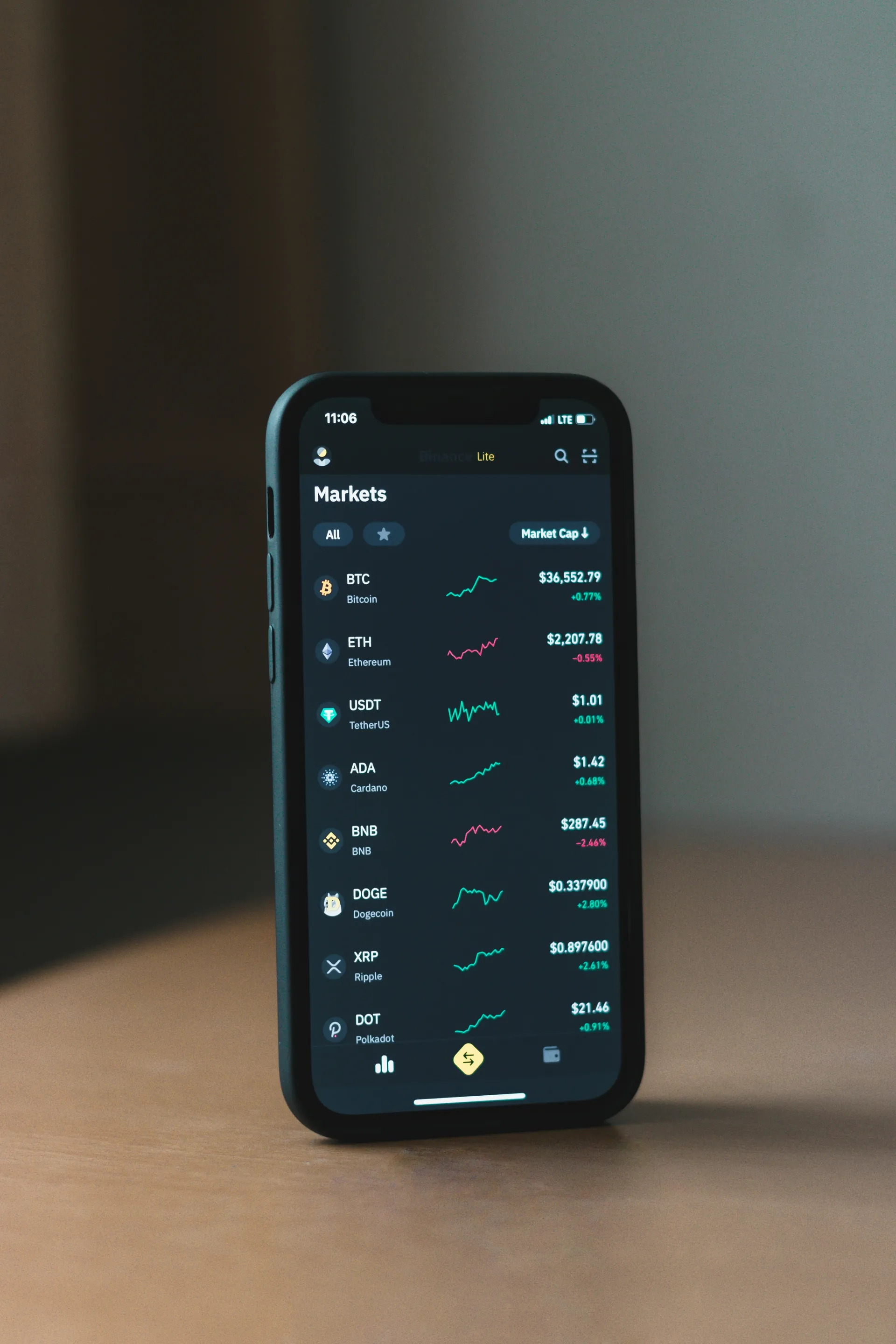Introduction to Cryptocurrency Staking
Cryptocurrency staking is a method for earning rewards by locking up your digital assets to support blockchain network operations. It allows you to generate passive income while enhancing the security and efficiency of the blockchain.
Staking has become a popular alternative to the energy-intensive proof-of-work mechanism, offering a more eco-friendly approach to achieving consensus and validating transactions on the network.
If you’re aiming to maximize your cryptocurrency holdings, staking is a compelling option. By staking, you can earn additional tokens as rewards, often at rates higher than traditional savings accounts. This process is central to proof-of-stake (PoS) blockchains, where staked assets are essential for transaction validation and maintaining network stability.
As the crypto market evolves, staking has become a key strategy for many investors. Whether you hold Ethereum (ETH), Cardano (ADA), or other staking-compatible assets, understanding staking can guide your investment decisions.
Let’s explore how staking works and why it could enhance your crypto portfolio.
The Mechanism Behind Staking

Understanding Proof of Stake (PoS)
Proof of Stake (PoS) is a consensus mechanism that has become popular as an energy-efficient alternative to Proof of Work (PoW). In PoS systems, validators are selected to create new blocks based on the amount of cryptocurrency they hold and are willing to “stake” as collateral.
This method significantly reduces the computational power needed to secure the network, making it more environmentally friendly and scalable.
The PoS mechanism works on the idea that those with a larger stake in the network have a stronger incentive to uphold its integrity. By requiring validators to lock up their assets, the system establishes a financial deterrent against malicious actions. If a validator attempts to approve fraudulent transactions, they risk losing their staked funds through a process known as “slashing.”
How Staking Works
The staking process starts when a user decides to become a validator by locking up a specific amount of cryptocurrency in a dedicated smart contract. Once the minimum staking requirement is met, the user becomes eligible to be selected to propose and validate new blocks. The selection process is usually pseudo-random, with the likelihood of being chosen proportional to the size of the stake.
When a validator is selected, they are tasked with verifying transactions, creating a new block, and adding it to the blockchain. Other validators then confirm the accuracy of the proposed block.
If a consensus is reached, the block is added to the chain, and the selected validator earns a reward in the form of newly minted tokens.
There are multiple ways to participate in staking. Solo staking requires technical expertise and a significant investment, while staking pools and services allow users to participate with smaller amounts of cryptocurrency. Some exchanges also provide staking services, making it easier for average users to earn rewards without handling the technical complexities of running a validator node.
It’s important to remember that while staked assets are locked, their value continues to fluctuate with market conditions. Additionally, some networks enforce an “unbonding period” during which staked assets cannot be withdrawn immediately, adding an extra layer of commitment to the staking process.
Benefits of Cryptocurrency Staking

Earning Rewards
One of the most appealing aspects of cryptocurrency staking is the ability to earn passive income. By locking up your digital assets, you can generate rewards that often exceed traditional investment returns. These rewards are usually distributed in the form of additional tokens, which can be especially profitable in a growing market.
The annual percentage yield (APY) for staking varies significantly across different cryptocurrencies. For example, Ethereum staking typically offers an APY of 4-6%, while Polkadot provides a more generous 10-12% APY.
This potential for consistent reward generation makes staking an attractive option for long-term investors aiming to maximize their crypto holdings.
Additionally, many platforms now provide compounding options, enabling you to automatically reinvest your staking rewards. This compounding effect can substantially boost your returns over time, creating a snowball effect that accelerates the growth of your digital asset portfolio.
Enhancing Network Security
Beyond personal financial benefits, staking plays a critical role in maintaining the security and integrity of blockchain networks. By participating in staking, you actively contribute to the network’s stability and resilience against potential attacks.
The security enhancement stems from the economic incentives built into the staking mechanism. Validators are required to lock up a significant amount of cryptocurrency as collateral, aligning their interests with the network’s success.
This financial commitment discourages malicious behavior, as any attempt to compromise the system could lead to the loss of their staked assets through slashing penalties.
Furthermore, staking promotes a more decentralized validator network. As more participants stake their assets, control over the network becomes more distributed, making it increasingly difficult for any single entity to gain undue influence over the blockchain.
This decentralization is essential to the security and trustworthiness of cryptocurrency networks.
By choosing to stake, you’re not just earning rewards; you’re also playing a vital role in supporting the blockchain ecosystem. Your participation helps ensure the network remains secure, efficient, and resistant to attacks, contributing to the long-term viability and adoption of the cryptocurrency you are invested in.
Considerations before Staking

Choosing the Right Platform
Choosing the right staking platform is essential to maximize rewards and minimize risks. When evaluating platforms, consider factors such as the range of supported cryptocurrencies, fee structures, and user interface. For example, platforms like Binance offer a wide variety of staking options with competitive APY rates, while platforms like Coinbase focus on user-friendliness.
Pay close attention to the platform’s reputation and security measures. Look for exchanges that implement strong security protocols, such as two-factor authentication and cold storage for assets.
It’s also important to check if the platform is regulated in your jurisdiction, as this provides an additional layer of protection.
Decide whether you prefer a custodial or non-custodial solution. Custodial platforms like Kraken or Crypto.com handle the technical aspects of staking for you, while non-custodial options like Lido or Rocket Pool give you more control but may require greater technical expertise.
Potential Risks Involved
While staking can be rewarding, it’s important to understand the risks involved. A significant concern is the possibility of slashing, where your staked assets may be penalized or confiscated if the validator you’re staking with acts maliciously or encounters technical issues.
This risk is particularly relevant if you are running your own validator node.
Liquidity risk is another factor to consider. Many staking protocols have lock-up periods during which you cannot access or trade your staked assets. This can be an issue if you need to react quickly to market changes or require immediate access to your funds.
Market volatility is also a concern. The value of your staked cryptocurrency can fluctuate significantly during the staking period. If the price drops substantially, your staking rewards might not offset the loss in asset value. It’s important to evaluate your risk tolerance and investment horizon before committing to long-term staking.
Smart contract vulnerabilities pose another risk, particularly when using decentralized finance (DeFi) platforms for staking. Flaws in smart contract code can result in the loss of funds or other unexpected issues. Always research the platform’s track record and any audits conducted on their smart contracts.
Finally, be mindful of the evolving regulatory landscape surrounding cryptocurrency staking. The legal status of staking activities varies by jurisdiction and may change over time, potentially impacting your ability to participate or the tax implications of your staking rewards.
Conclusion
Cryptocurrency staking presents an exciting way to earn passive income while actively contributing to blockchain security. As discussed, staking rewards can vary widely, ranging from 3% to over 18%, depending on the platform and token you choose. It’s essential to carefully evaluate factors such as lock-up periods, minimum staking requirements, and associated risks before getting started.
Whether you decide on solo staking, joining a staking pool, or leveraging a staking service, always prioritize security and conduct thorough research. With the evolving crypto landscape, staking is poised to become an increasingly significant aspect of the ecosystem.
Begin with small steps, stay informed, and explore this innovative opportunity to make your digital assets work for you. The future of finance is unfolding – are you ready to stake your claim?
FAQ
Is staking crypto a good idea?
Staking crypto can be a good way to earn passive income and contribute to blockchain security. However, it comes with risks such as asset volatility, lock-in periods, and potential losses if market conditions change.
Can I lose my crypto if I stake it?
Yes, staking involves risks that could lead to losing your crypto. These include slashing penalties, market volatility, and project failures. If a validator malfunctions or the project’s integrity is compromised, you may face losses.
Can you make $1000 a month with crypto?
It is possible to earn $1000 a month with crypto, but it requires a well-informed strategy, effective risk management, and patience. Common methods include staking, trading, yield farming, and diversifying investments across various cryptocurrencies.
Which crypto is best for staking?
The best cryptocurrency for staking depends on your risk tolerance and desired returns. Ethereum (ETH) and Cardano (ADA) are stable options with APYs of approximately 4% and 3.88%, respectively. Avalanche (AVAX) offers a higher APY of 8.57%, though it comes with increased volatility.


